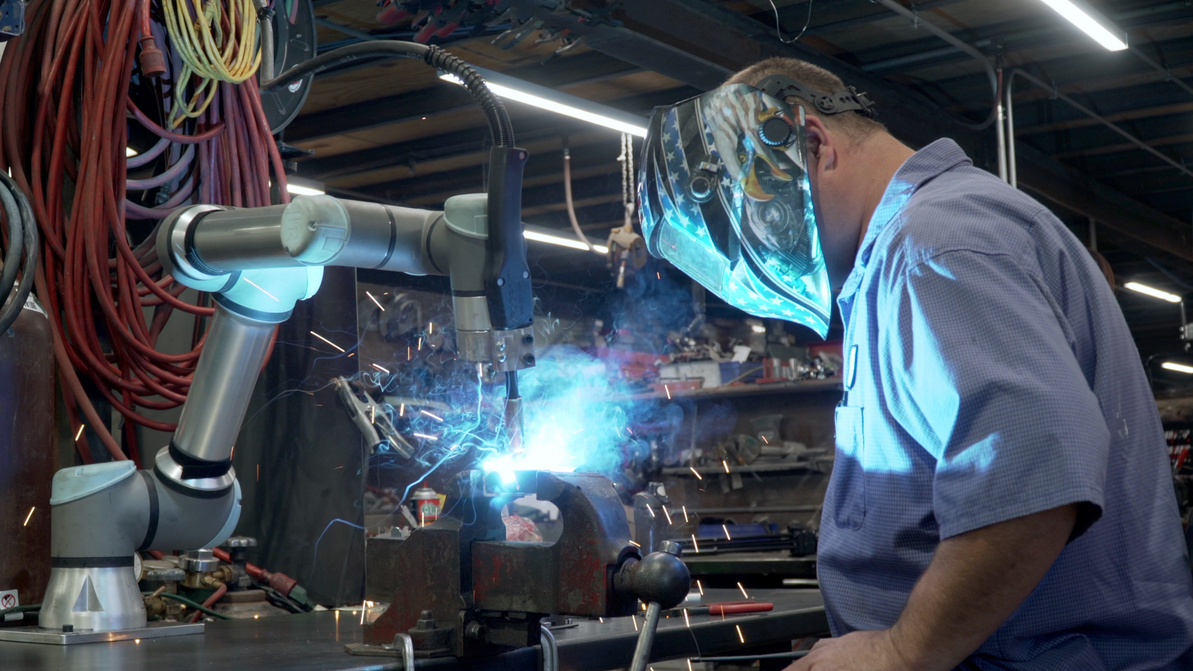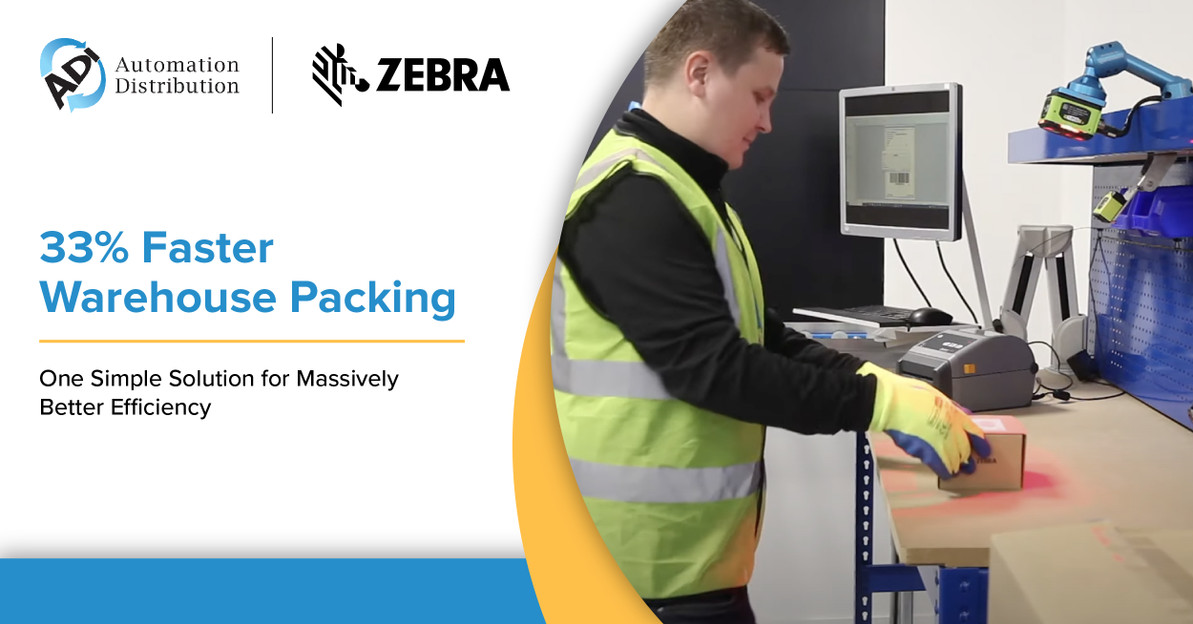Universal Robots Cobot Helps Manufacturer Meet Quality Targets
At the horseshoe-shaped assembly line in Youngstown, Ohio, engine parts move like clockwork on a conveyor with 60-second takt time for each station.
“It’s a fast-paced line; everything is just-in-time, just-in-sequence,” says Gary Bobalik, director of marketing at Comprehensive Logistics. The company is the leading logistics and contract manufacturing provider to two of North America’s largest automotive enterprises, operating suspension, powertrain and interior component sub-assembly lines.
The line leaves no room for error. As the engine cradle sub-assemblies reach the end of the line, the company needs to inspect that each sub-assembly, which includes a critical steering-gear wire harness connector, is fully seated and locked.
“If there is an intermittent loose connection or it’s connected and not locked into place, it can cause an intermittent or complete loss of the power steering, which is a level 8 on the severity scale,” says Mike O’Keefe, value-added assembly superintendent at Comprehensive Logistics. “It’s a life-threatening failure mode, so we need to make sure that those clips are locked into place with 100 percent confidence.”
O’Keefe also describes the challenge.
“Industry-wide, manual inspection is only about 80 percent efficient, so we were looking for repeatable quality through an automated system,” he says.
Tight Spots
This process was causing the Ohio manufacturer headaches, however, as the stationary multi-camera system the company implemented couldn’t position cameras into tight spots and wasn’t as repeatable as the manufacturer needed. “The data gathered by the camera system wasn’t as pure,” adds O’Keefe, who also experimented with a probe-style robot that did not meet repeatability requirements.
The company started researching alternatives. The solution would have to support Comprehensive Logistics’ up-time requirements, be simple to use and had to integrate easily with the processes and people on the line.
“We had to find something that wouldn’t contribute to a potential safety issue,” O’Keefe says. “We looked at Universal Robots and quickly realized that this was a cost-effective, light-duty robot that could move a vision camera to the right positions safely and repeatably. The dexterity of the Universal Robot enables it to get underneath where the mission-critical points are and be 100 percent repeatable.”
Results in Real Time
So the assembly workers at Comprehensive Logistics got a new colleague at the end of the line. The ceiling-mounted UR10 collaborative robot from Universal Robots is equipped with a vision camera and moves quickly between inspection points, snapping a picture of each connection before it retracts to a “home” position and waits for the next assembly to inspect.
The line assembles engine cradle versions for both a diesel motor with 11 inspection points and a gas motor with nine inspection points. Software integrated with the UR robot tracks the build through the line, informing the robot which version needs to be inspected.
Each image taken is immediately shown on a screen next to the robot while a second screen with a diagram of the engine cradle shows each inspection point completed with either a green or a red check mark to indicate pass or failure.

Turnkey Integration
O’Keefe stresses the up-time achieved since the UR10 took over the engine cradle inspection.
“We have not had any interruption in production since installing this robot—aside from possibly adjusting some of the images on the camera unrelated to the programming of the robot,” he says. “The UR10 has been running for two years now in two- or three-shift operations round the clock.”
The application can also adapt. If new requirements or different inspection criteria are given by the customer, it’s easy to add inspection points to the process. “Our integrator simply dials in remotely, updates what’s needed and walks us through the process,” O’Keefe says.
The turnkey application was developed by Automation Zone, an Ohio-based Certified Systems Integrator of UR robots. Despite using external resources, the price tag on the overall application was still cost-effective.
Comprehensive Logistics’ assembly superintendent details how the robot running a three-shift operation would pay for itself in about seven months. “Looking at just the robot hardware, the ROI is probably less than four months,” he says, adding that this calculation does not take into account the elimination of fees from the customer due to quality issues. “Because we get 100 percent quality from the UR robot, I believe that the pay-back period would be even shorter, knowing that we’re protected against penalties.”
Re-Inspection Stays Within Cycle Time
Universal Robots is classified as a collaborative robot—or cobot—due to the built-in safety system that makes the robot arm automatically stop operating if it encounters objects or people within its route. This means that Comprehensive Logistics could have the UR10 operate right next to employees on the line.
“We didn’t need to have the cumbersome light curtains or other types of guarding that are required with some of the standard robotic systems in the industry,” says O’Keefe, stressing the robot’s ability to easily start and stop mid-cycle. “If the inspection fails, we can go in and re-inspect just the failed portion of the cycle. Typically, if you have a stand-alone robot, it will re-run the entire process, which takes me over my cycle time.”
With the 60-second takt time at each station, cycle time on the assembly line is set for about 48 seconds, with the UR cobot taking approximately 32 seconds to run through the inspection, allowing enough time for re-run fails without the whole line coming to a standstill.
Another Colleague
The flexible operation is also beneficial if the robot stops due to a power outage or if it’s interrupted by human interaction. “We just re-initiate the UR robot. We have a couple of other robot scenarios in our facility where you need to ‘return-to-home’ those devices and then re-run the process completely. Universal Robots provides a quick-change ability,” says O’Keefe, and recounts how the operators, who are used to many interruptions, are now able to do their job continuously.
One of the employees on the line, crane operator George White, now regards the UR10 cobot as another colleague on the line. “It’s here before I am during the day and here when I leave. It’s like family,” he says.
White might see more cobot colleagues in the future. “If Comprehensive Logistics is awarded more assembly builds, we could potentially replicate this process on other lines if the customer has mission-critical inspection points that need to be 100 percent quality,” O’Keefe says.
Recent Posts
-
Using Scan Tunnels to Track, Sort and Route Warehouse Packages
If you’re using conveyor lines to move products, packages and shipments through your warehouse, the …Apr 17th 2024 -
Embracing Collaboration: How Universal Robots Transformed DeAngelo Marine Exhaust
When the welding robots made their debut at DeAngelo Marine Exhaust, there was a mix of excitem …Apr 11th 2024 -
How to Speed Up Your Warehouse Packing by 33% with Machine Vision
Packing benches are some of the busiest areas of most warehouses, with thousands of items to pack i …Apr 4th 2024




